Sam Barlow and Annapurna Interactive are launching Telling Lies, an interactive investigation thriller game, on August 23 on the PC, Mac, and iOS devices. At least, that’s what they’re telling us they’re going to do. Then again, this is all about people who lie to us.
Barlow is the creator of the award-winning title Her Story, in which you search through a bunch of police interviews to unravel a murder mystery. Telling Lies takes this interactive video genre to another level, exploring the extent to which we can ever truly know those we love.
Deciphering the truth isn’t easy because the main character is a master of deceit as an undercover operator. And this character’s actions remind me of one of my favorite movies of all time: Miller’s Crossing, a 1990 mob movie by Joel and Ethan Coen. During the film, a befuddled mob leader, Caspar, comically says to a fellow, “You double-cross once. Where does it all end? An interesting ethical question.”
Double-crosses occur in Telling Lies, but I won’t tell you which ones. Rest assured, Barlow has already gone on record as saying most of the characters tell lies. And we find in the plot fairly quickly that one of the characters is an undercover operative.
June 5th: The AI Audit in NYC
Join us next week in NYC to engage with top executive leaders, delving into strategies for auditing AI models to ensure fairness, optimal performance, and ethical compliance across diverse organizations. Secure your attendance for this exclusive invite-only event.
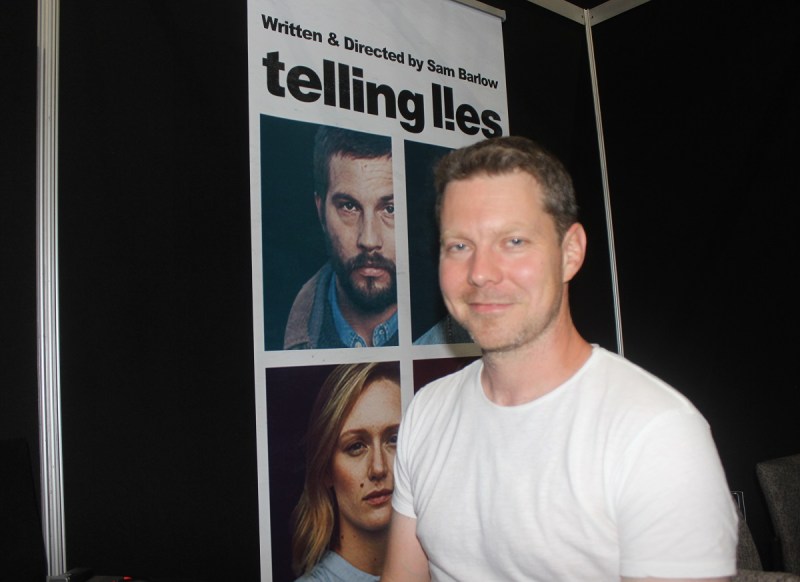
Above: Sam Barlow came to E3 2019 to talk about Telling Lies.
Telling Lies starts out with a woman who sits down in front of a laptop loaded with a stolen National Security Agency database full of film footage. You play the entire game sitting in front of the laptop searching through that video for clues. It’s the same mechanic as Her Story. Except you forget that you are playing as the woman, who has her own role to play as a character.
Check out our GamesBeat review vault for past reviews.
The footage (taken from surreptitiously obtained smartphone video surveillance) covers two years in the intimate lives of four people whose lives are linked by a single incident. You explore the database by typing search terms. You watch the clips where those words are spoken, and then you piece together the story. The story is a linear mystery, but it unfolds in a nonlinear way based on which words you search for first.
You can’t speed this process up because it’s not a smart database. You can’t search for spoilers like, “Tell me what the ending of the story is.” You then control the pace and direction of the narrative by doing searches that generate addition revelations and keywords.
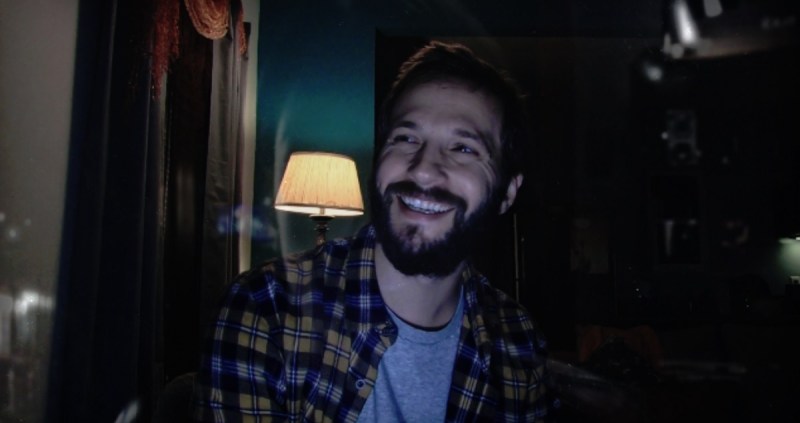
Above: Logan Marshall-Green is one of the stars of Telling Lies.
What you’ll like
A nonlinear mystery
As with Her Story, you start by searching through videos. You want to reconstruct a narrative, going from A to B. But you aren’t told what A is, and you don’t know what B is. That can be a little overwhelming at the beginning, but you can see that the available keywords — such as the names of characters — lead to more videos in a kind of branching narrative. You watch all of the branches, and they lead to more branches. At some point, you find the right branch, and that leads you to a revelation or the actual ending. It’s like a charades story, where players have to guess at a riddle by asking about keywords only.
Good casting and acting

Above: Angela Sarafyan is also part of the Westworld cast.
This video scenes include actors Logan Marshall-Green (Prometheus), Alexandra Shipp (X-Men: Apocalypse), Kerry Bishé (The Romanoffs), and Angela Sarafyan (Westworld). They aren’t animated characters. But you’ll only encounter them if you click on their videos in the database. Sarafyan plays a sultry “cam girl.” When I was watching a video of her “cam images,” my kid walked by as Sarafyan’s character said, “Do you like your women Gothic?” My kid said, “Ew.”
You encounter a few magical moments, like Shipp singing in the dark or Bishé speaking in a kind of code using puppets to her spouse. Marshall-Green plays a complicated character whose motivations are hard to figure out. It’s like he believes who he is pretending to be. And only bad things come from that delusion.
Deception within deception
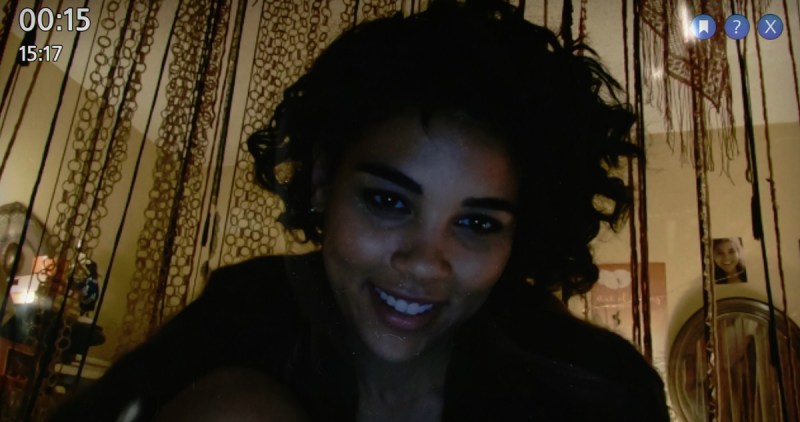
Above: Telling Lies
Not only is somebody important lying to somebody, that liar is also pulling off yet another lie. When you discover this, you can see the depth of the betrayal. And you say to yourself, “How can someone lie that much or deceive themselves into believing their own lies?”
What you won’t like
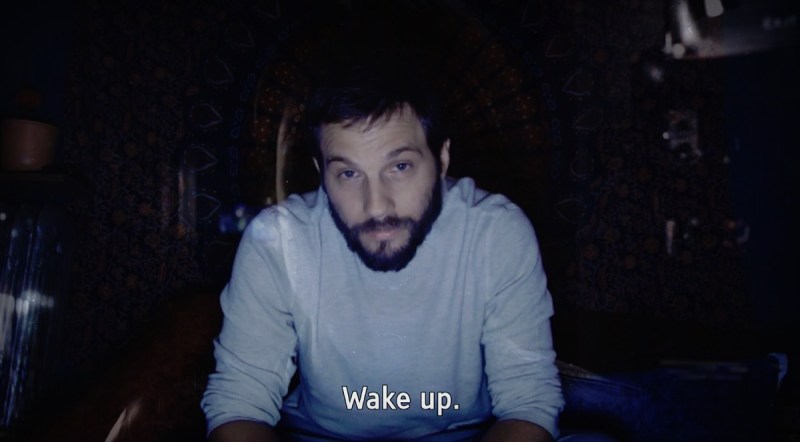
Above: Who’s the liar?
Characters who aren’t fleshed out
In a movie, you get to see characters from the start to the end. If a character has a small role, you know it. But in Telling Lies, you can come across 30 characters. You don’t always know who’s important. One character named Chris plays a major role in one scene, but that character is virtually unknown before that. That scene was kind of jarring. Too often you get just a slice of a particular character, and that’s all you ever get. I just wondered if I had missed one of his videos. If you are a bit paranoid about that, it’s understandable. If you search for Chris’s name, you only get the top five results in the search, as opposed to all of the videos available.
Remembering to rewind
When you search on a keyword, you often can discover a new conversation that will advance your state of learning in the mystery. But it will start playing at the point it mentions the keyword. If you forget to rewind the conversation, you may miss something that is important to the plot. But nothing reminds you to do this. You have to remember it, and that is a sign of how clunky a database as a user interface can be.
An ending that can be anticlimactic

Above: The user interface for Telling Lies. Can you dig out the truth?
I came across several different but important videos near the end. But I couldn’t really tell which one was considered the final video. At some point in the game, you realize that your job is find the key videos, understand what happened, and then send them onward. The signal that I had achieved this came as the desktop for viewing the videos changed. I could take my package of analyzed videos and then send them onward to somebody important (I won’t spoil that).
I was able to package my analyzed video and send it to its final destination. But I didn’t know whether I had truly come across all of the relevant final scenes in the mystery. This made the truth of the actual ending to be somewhat anticlimactic.
I had to double back and search through more videos to ensure that I had seen all of the key scenes. I also remembered to rewind the videos, as mentioned above. I had bookmarked scenes and remembered if I had watched them. Only then was I assured that I had seen everything important. That left me feeling a little unsatisfied, with a lessened impact from the final scene.
Conclusion
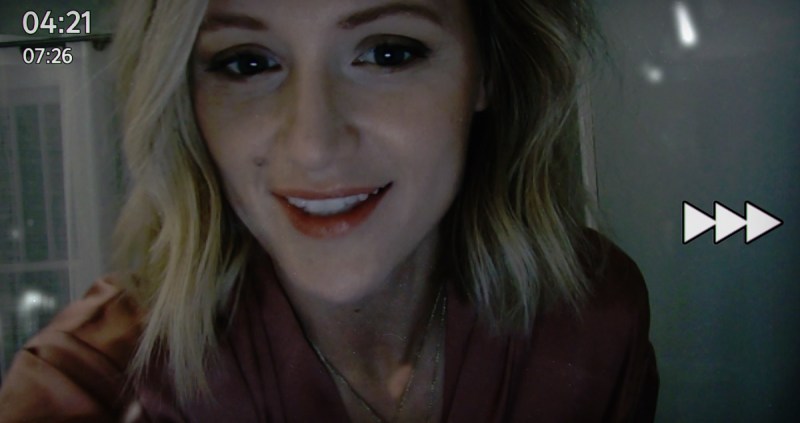
Above: Kerry Bishé starred in shows like Scrubs and Argo.
Barlow is single-handedly creating a genre out of the movie-video game combination. This story is more complicated than Her Story, which revolved around a single actress. Four more people are relevant in this tale, but the game has more than 30 characters altogether. The web of lies grows. As Sir Walter Scott said, “Oh what a tangled web we weave, when first we practice to deceive.”
And while I can appreciate this new art form, this story wasn’t quite as dramatic as I had hoped for, or at least the sequence in which I saw the events wasn’t as satisfying. It’s not as long as I thought it might be. With the pluses and minuses here, I see this as an evolving new medium but not one that has yet reached its highest form.
Score: 80/100
Telling Lies releases on Windows, the Mac, and iOS on August 23. Annapurna gave us a code for this review.

